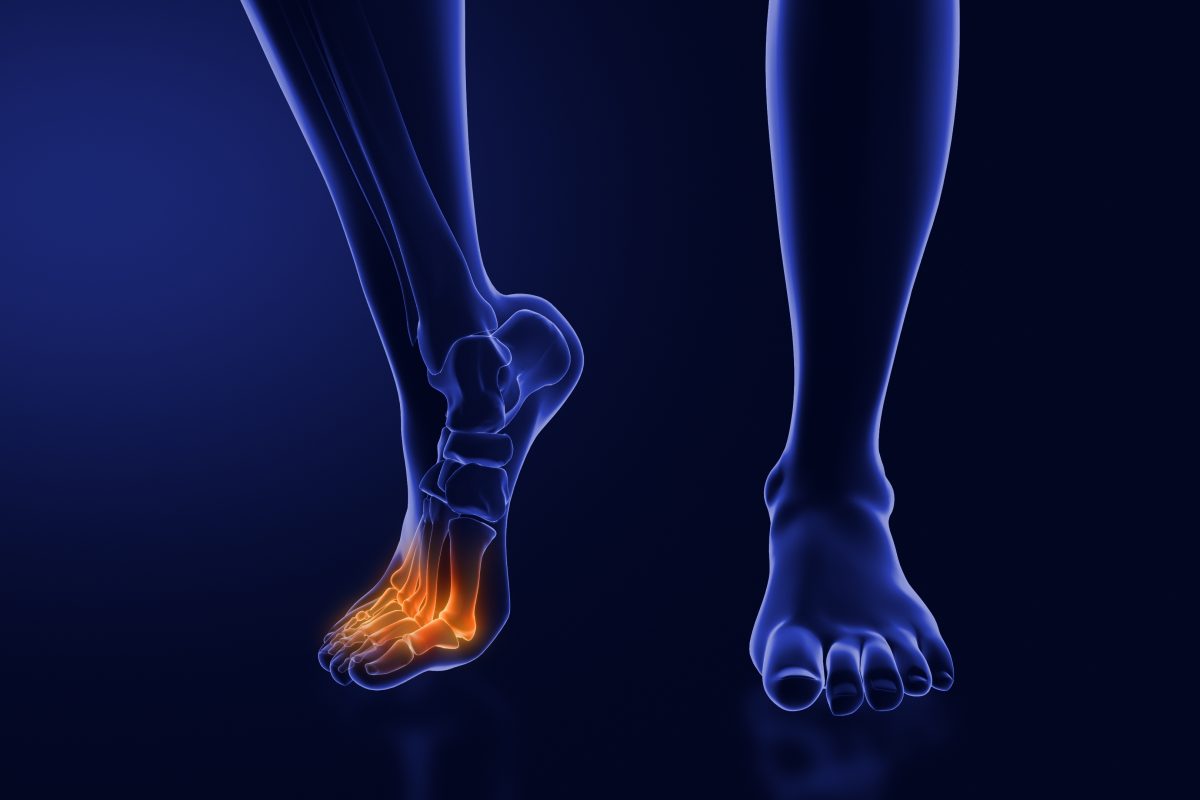Peripheral neuropathy, or neuropathy in the legs and feet, can feel like burning, tingling, or pins and needles that never go away.
The condition can interrupt sleep, make movement painful, and reduce quality of life. It’s more common as people age, but it can affect anyone.
In this article, you’ll learn what peripheral neuropathy is, what causes it, and the most common symptoms.
You’ll also discover the nine treatment options that reduce pain, improve mobility, and help you manage daily activities with more comfort.
What Is Peripheral Neuropathy?
Peripheral neuropathy occurs when peripheral nerves become damaged. These nerves belong to the peripheral nervous system, which links the brain and spinal cord with the rest of the body.
When the nerves don’t work properly, the signals they send get disrupted. That’s when neuropathy symptoms appear.
Common symptoms include tingling, burning, muscle weakness, and nerve pain in the legs and feet. You may also notice a painful thigh muscle that worsens with activity.
Some people deal with severe pain that interferes with walking. Others lose sensation and struggle with balance.
Causes of Neuropathy in Legs and Feet
Peripheral neuropathy can develop for many reasons. Some causes are related to chronic health conditions, while others result from lifestyle factors or injuries.
Common causes include:
- Diabetes: High blood sugar over time can injure sensory nerves in the legs and feet, leading to diabetic neuropathy.
- Kidney disease: When the kidneys don’t filter properly, toxins build up in the blood and damage nerves.
- Autoimmune disorders: Conditions such as lupus or rheumatoid arthritis may cause the immune system to attack healthy nerve tissue.
- Vitamin deficiencies: Low levels of B vitamins weaken nerve health and make neuropathy symptoms worse.
- Nerve injuries: Accidents, surgeries, or repetitive strain can cause direct nerve damage. Poor blood flow from peripheral vascular disease can also reduce oxygen supply to nerves.
- Alcohol, toxins, and medications: Heavy alcohol use, exposure to toxic chemicals, and certain drugs may injure nerves. Some cancer patients also develop chemotherapy-induced peripheral neuropathy (CIPN) during treatment.
When the cause isn’t clear, doctors may classify the condition as idiopathic peripheral neuropathy.
Suggested Reading:
What’s Causing Your Aching Legs at Night?
Diagnosing Peripheral Neuropathy
Doctors use several steps to diagnose peripheral neuropathy and uncover the cause of nerve damage. Each test provides different clues about how neuropathy affects nerves in the legs and feet.
The process often includes:
- Medical history: Doctors review symptoms of peripheral neuropathy, family history, and health conditions that may be causing peripheral nerve damage.
- Physical exam: Reflexes, balance, motor nerves, and sensations are checked to see how the nervous system responds.
- Blood tests: These can reveal diabetes, vitamin deficiencies, thyroid issues, or kidney problems that affect nerve health and blood pressure.
- Imaging tests: MRI or CT scans can detect compressed nerves or growths. A nerve ultrasound may show how blood flow and tissue affect nerves.
- Nerve function studies: A nerve conduction study measures how fast pain signals travel. Electromyography looks at muscle activity linked to neuropathic pain.
- Biopsies: In rare cases, a nerve biopsy or skin biopsy helps diagnose peripheral neuropathy by showing damage to sensory or autonomic nerves.
Some conditions, like chronic inflammatory demyelinating polyneuropathy, require more specialized tests.
Effective Treatments for Neuropathy in Legs and Feet
Peripheral neuropathy treatments vary depending on the cause. Below are the most common and effective treatment methods to relieve neuropathy pain:
1. Medications to Manage Pain Symptoms
Doctors often prescribe medications that block pain signals and ease discomfort. Antidepressants such as duloxetine change how the brain processes pain.
Antiseizure drugs like gabapentin calm overactive nerves that cause burning or tingling sensations. Nonsteroidal anti-inflammatory drugs may help if the inflammation worsens the pain.
For targeted relief, lidocaine patches or capsaicin creams can numb painful areas. While these pain medicines don’t reverse nerve damage, they help patients stay more active.
2. Physical Therapy to Improve Mobility
Physical therapy helps restore strength and coordination in patients with neuropathy. Exercises target weak muscles, improve balance, and encourage blood flow in the legs and feet.
Therapists may include low-impact activities such as cycling or swimming. These support circulation while reducing strain on sensitive nerves.
Some patients also benefit from braces or assistive devices when balance issues interfere with walking safely.
Suggested Reading:
What Pain Management Physicians Do and When to See One
3. Lifestyle Changes That Support Nerve Health
Daily habits can make a big difference in how peripheral neuropathy develops. Doctors often recommend:
- Control blood sugar levels if you have diabetes
- Maintain a healthy weight through exercise and balanced nutrition
- Eat foods rich in B vitamins to prevent deficiencies
- Limit alcohol and avoid toxins that may cause nerve damage
These steps don’t replace medical care, but they help prevent peripheral neuropathy from getting worse.
4. Chiropractic Care and Occupational Therapy
Chiropractic adjustments may relieve nerve compression that contributes to neuropathy pain. Improved spinal alignment can reduce discomfort and improve movement.
Occupational therapy focuses on helping patients adapt to daily challenges. Therapists may suggest ergonomic changes, specialized tools, or modified routines.
These adjustments reduce strain and allow patients to manage peripheral neuropathy symptoms more effectively.
5. Minimally Invasive Procedures
When nerve compression is causing peripheral neuropathy, procedures can provide relief. Corticosteroid injections reduce inflammation around affected nerves. Nerve blocks interrupt pain signals for a longer-lasting sense of comfort.
Surgery may be considered for severe cases. For example, releasing pressure in carpal tunnel syndrome can restore sensation and reduce neuropathy pain.
These treatment methods are used when other options don’t provide enough relief.
6. Wellness Therapies to Complement Medical Care
Wellness therapies can support nerve health alongside traditional treatments, especially when combined with medical care. Common options include:
- Acupuncture: May stimulate autonomic nerve fibers and reduce neuropathic pain.
- Medical massage: Improves blood circulation and eases tight muscles.
- IV vitamin therapy: Replenishes nutrients linked to nerve function, especially helpful when vitamin deficiencies contribute to peripheral neuropathy.
These therapies don’t replace medical treatment, but they can improve comfort and support recovery.
7. Neurologic Testing to Guide Treatment
Ongoing testing allows doctors to track how peripheral neuropathy responds to treatment. A nerve conduction study measures how fast signals travel through nerves.
Electromyography records muscle activity to check for nerve damage.
These results show whether current treatments are helping or need adjustment. Regular monitoring helps doctors manage peripheral neuropathy more effectively.
8. Preventing Symptoms From Progressing
Prevention is part of treatment. Managing blood pressure protects the blood vessels that supply nerves. Regular exercise improves circulation and lowers the chance of further nerve damage.
Foot care is especially important. Daily checks, supportive shoes, and avoiding injuries reduce complications in patients with neuropathy in the legs and feet.
Vaccinations, such as the shingles vaccine, can also prevent neuropathic pain linked to infections.
9. Comprehensive Care Plans
Most patients need more than one treatment. A care plan may include medications, physical therapy, and wellness therapies together.
Doctors choose treatment methods based on the cause, whether it’s diabetes, injury, or another condition. The goal is to relieve pain symptoms, support nerve health, and help patients regain independence.
With the right combination of therapies, peripheral neuropathy can be treated more effectively, and daily life becomes easier.
Get Personalized Neuropathy Treatment Plans at Wellness and Pain
Peripheral neuropathy affects nerves that connect the central nervous system to the rest of the body.
Once damaged, these nerves can’t send signals correctly, which disrupts movement, balance, and comfort in the legs and feet.
This condition can interfere with daily activities and reduce independence. Many patients find that mobility challenges also affect rest, social life, and overall well-being.
At Wellness and Pain, we provide treatment for peripheral neuropathy that focuses on the legs and feet. Medical options include nerve blocks, medial branch blocks, and epidurals for lower back pain that radiates downward.
These treatments interrupt abnormal pain signals and ease irritation from damaged or compressed nerves. Nerve ablations are also available when other options don’t provide enough relief.
Our goal doesn’t just stop at treating pain. We also restore your mobility and improve your overall quality of life.
Book an appointment with Wellness and Pain to treat neuropathy in your legs and feet.
FAQs About Treatment for Neuropathy in Legs and Feet
What is the best treatment for neuropathy in your legs?
Treatment depends on the cause. Peripheral neuropathy treated early usually responds better. Doctors may prescribe medications, recommend physical therapy, or suggest procedures.
Other treatments, such as acupuncture, massage, or IV therapy, may also help relieve symptoms when combined with medical care.
What triggers neuropathy in the legs?
Common triggers include diabetes, kidney disease, vitamin deficiencies, and autoimmune disorders, where the immune system attacks healthy nerve tissue.
Neuropathy can also follow cancer treatment, alcohol use, toxin exposure, or poor circulation. When no cause is found, it’s called idiopathic peripheral neuropathy.
What pills reverse neuropathy?
No pill fully reverses neuropathy. Peripheral neuropathy depends on the cause, so doctors prescribe medications to manage pain symptoms.
Options include antidepressants, antiseizure drugs, and nonsteroidal anti-inflammatory drugs.
What are the most common symptoms of chemotherapy-induced peripheral neuropathy (CIPN)?
CIPN is a side effect of cancer treatment that damages nerves in the hands and feet. Common symptoms include tingling, burning, numbness, and sharp shooting pains. Muscle weakness and balance problems are also common.











